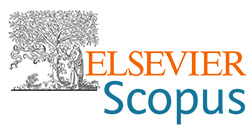Dual-mode environmental remediation of toxic dyes through chemo-catalytic and photocatalytic pathways using covellite (cus) nanosheet clusters
DOI:
https://doi.org/10.62638/ZasMat1232Apstrakt
Clusters of high-purity Covellite (CuS) nanosheets with remarkable catalytic properties were synthesized by a simple mechanochemical process, which effectively addressed certain pitfalls of traditional solid-state synthesis, including hours-long grinding, the necessity of annealing to remove byproducts, and the hurdles in achieving crystallite sizes below 20 nm. The study of reaction mechanisms revealed the formation of an intermediate [Cu(tu)] Cl. 0.5 H2O, which acted as a self-sacrificial precursor for forming CuS nanosheets. The extensive characterization incorporating XRD with Rietveld refinement, HRTEM, FESEM, EDS, UV-VIS absorption, FTIR, and Raman Spectroscopy confirmed the formation of phase pure hexagonal CuS with stacked sheet-like morphology forming microflowers, with an average crystallite size of 11nm and having an optical band gap of 1.91 eV. Studies on the degradation of Methyl Orange (MO), a major environmental pollutant, using Covellite nanosheets as a dual catalyst had demonstrated remarkable efficiency, achieving 84% degradation in 12 minutes through chemo-catalysis and 89.5% in 40 minutes through photocatalysis. This study suggests ecofriendly and promising dual pathways to eliminate organic dye contamination by employing Covellite(CuS) nanocatalyst.
Ključne reči:
Clusters of high-purity Covellite , chemo-catalysis, photocatalysis, Methyl Orange (MO), Langmuir-Hinshelwood modelReference
Ahmed, J., Thakur, A., & Goyal, A. (2021). Industrial Wastewater and Its Toxic Effects. In Biological Treatment of Industrial Wastewater. https://doi.org/10.1039/9781839165399-00001
Ilyas, M., Ahmad, W., Khan, H., Yousaf, S., Yasir, M., & Khan, A. (2019). Environmental and health impacts of industrial wastewater effluents in Pakistan: A review. In Reviews on Environmental Health (Vol. 34, Issue 2). https://doi.org/10.1515/reveh-2018-0078
Lellis, B., Fávaro-Polonio, C. Z., Pamphile, J. A., & Polonio, J. C. (2019). Effects of textile dyes on health and the environment and bioremediation potential of living organisms. Biotechnology Research and Innovation, 3(2). https://doi.org/10.1016/j.biori.2019.09.001
Yaqoob, A. A., Parveen, T., Umar, K., & Ibrahim, M. N. M. (2020). Role of nanomaterials in the treatment of wastewater: A review. In Water (Switzerland) (Vol. 12, Issue 2). https://doi.org/10.3390/w12020495
Gopinath, K. P., Madhav, N. V., Krishnan, A., Malolan, R., & Rangarajan, G. (2020). Present applications of titanium dioxide for the photocatalytic removal of pollutants from water: A review. In Journal of Environmental Management (Vol. 270). https://doi.org/10.1016/j.jenvman.2020.110906
Sibhatu, A. K., Weldegebrieal, G. K., Sagadevan, S., Tran, N. N., & Hessel, V. (2022). Photocatalytic activity of CuO nanoparticles for organic and inorganic pollutants removal in wastewater remediation. Chemosphere, 300. https://doi.org/10.1016/j.chemosphere.2022.134623
Baibara, O. E., Radchenko, M. v., Karpyna, V. A., & Ievtushenko, A. I. (2021). A review of the some aspects for the development of zno based photocatalysts for a variety of applications. Physics and Chemistry of Solid State, 22(3). https://doi.org/10.15330/PCSS.22.3.585-594
Nimmy, A. V., Mahesh, A., Anandakumar, V. M., & Biju, V. (2024). Revealing the role of defect-induced trap levels in sol–gel-derived TiO2 samples and the synergistic effect of a mixed phase in photocatalytic degradation of organic pollutants. Journal of Physics and Chemistry of Solids,185. https://doi.org/10.1016/j.jpcs.2023.111774
Tahir, M. B., Rafique, M., Rafique, M. S., Fatima, N., & Israr, Z. (2020). Metal oxide- and metal sulfide-based nanomaterials as photocatalysts. In Nanotechnology and Photocatalysis for Environmental Applications. https://doi.org/10.1016/b978-0-12-821192-2.00006-1
Ayodhya, D., & Veerabhadram, G. (2018). A review on recent advances in photodegradation of dyes using doped and heterojunction based semiconductor metal sulfide nanostructures for environmental protection. In Materials Today Energy (Vol. 9). https://doi.org/10.1016/j.mtener.2018.05.007
Isac, L., Cazan, C., Andronic, L., & Enesca, A. (2022). CuS-Based Nanostructures as Catalysts for Organic Pollutants Photodegradation. In Catalysts (Vol. 12, Issue 10). https://doi.org/10.3390/catal12101135
Roy, P., & Srivastava, S. K. (2015). Nanostructured copper sulfides: Synthesis, properties and applications. In CrystEngComm (Vol. 17, Issue 41). https://doi.org/10.1039/c5ce01304f
Sudhaik, A., Raizada, P., Rangabhashiyam, S., Singh, A., Nguyen, V. H., van Le, Q., Khan, A. A. P., Hu, C., Huang, C. W., Ahamad, T., & Singh, P. (2022). Copper sulfides based photocatalysts for degradation of environmental pollution hazards: A review on the recent catalyst design concepts and future perspectives. Surfaces and Interfaces, 33. https://doi.org/10.1016/j.surfin.2022.102182
Jamal, F., Rafique, A., Moeen, S., Haider, J., Nabgan, W., Haider, A., Imran, M., Nazir, G., Alhassan, M., Ikram, M., Khan, Q., Ali, G., Khan, M., Ahmad, W., & Maqbool, M. (2023). Review of Metal Sulfide Nanostructures and their Applications. In ACS Applied Nano Materials (Vol. 6, Issue 9). https://doi.org/10.1021/acsanm.3c00417
Ain, N. ul, Zia-ur-Rehman, Aamir, A., Khan, Y., Rehman, M. ur, & Lin, D. J. (2020). Catalytic and photocatalytic efficacy of hexagonal CuS nanoplates derived from copper(II) dithiocarbamate. Materials Chemistry and Physics, 242. https://doi.org/10.1016/j.matchemphys.2019.122408
Ding, H., Yong, J., Zhang, J., Chen, B., Ding, B., & Wang, X. (2022). Anchoring Pd nanoparticles on hollow CuS nanoparticles for enhanced NIR induced photothermal effects for chemotherapeutic drug delivery and gastric cancer treatment. Ceramics International, 48(11). https://doi.org/10.1016/j.ceramint.2022.02.154
Kalimuldina, G., Nurpeissova, A., Adylkhanova, A., Adair, D., Taniguchi, I., & Bakenov, Z. (2020). Morphology and Dimension Variations of Copper Sulfide for High-Performance Electrode in Rechargeable Batteries: A Review. In ACS Applied Energy Materials (Vol. 3, Issue 12). https://doi.org/10.1021/acsaem.0c01686
Shawky, A., El-Sheikh, S. M., Gaber, A., El-Hout, S. I., El-Sherbiny, I. M., & Ahmed, A. I. (2020). Urchin-like CuS nanostructures: simple synthesis and structural optimization with enhanced photocatalytic activity under direct sunlight. Applied Nanoscience (Switzerland),10(7) https://doi.org/10.1007/s13204-020-01283-4
Nath, S. K., & Kalita, P. K. (2021). Temperature dependent structural, optical and electrical properties of CuS nanorods in aloe vera matrix. Nano-Structures and Nano-Objects, 25. https://doi.org/10.1016/j.nanoso.2020.100651
Ul Ain, N., Nasir, J. A., Khan, Z., Butler, I. S., & Rehman, Z. (2022). Copper sulfide nanostructures: Synthesis and biological applications. In RSC Advances (Vol. 12, Issue 12). https://doi.org/10.1039/d1ra08414c
Vasudevan, J., Johnson Jeyakumar, S., Arunkumar, B., Jothibas, M., Muthuvel, A., & Vijayalakshmi, S. (2019). Optical and magnetic investigation of Cu doped ZnO nanoparticles synthesized by solid state method. Materials Today: Proceedings, 48. https://doi.org/10.1016/j.matpr.2020.12.429
Khaldari, I., Naghavi, M. R., & Motamedi, E. (2021). Synthesis of green and pure copper oxide nanoparticles using two plant resources: via solid-state route and their phytotoxicity assessment. RSC Advances, 11(6). https://doi.org/10.1039/d0ra09924d
Tsuzuki, T. (2021). Mechanochemical synthesis of metal oxide nanoparticles. In Communications Chemistry (Vol. 4, Issue 1). https://doi.org/10.1038/s42004-021-00582-3
Narjis, A., Outzourhit, A., Aberkouks, A., el Hasnaoui, M., & Nkhaili, L. (2018). Spectroscopic study and thermoelectric properties of a mixed phase copper sulfide lamellas. Journal of Alloys and Compounds, 762. https://doi.org/10.1016/j.jallcom.2018.05.183
Bekhit, M., Abo El Naga, A. O., el Saied, M., & Abdel Maksoud, M. I. A. (2021). Radiation-induced synthesis of copper sulfide nanotubes with improved catalytic and antibacterial activities. Environmental Science and Pollution Research, 28(32). https://doi.org/10.1007/s11356-021-13482-9
Nethravathi, C., Nath, R., Rajamathi, J. T., & Rajamathi, M. (2019a). Microwave-Assisted Synthesis of Porous Aggregates of CuS Nanoparticles for Sunlight Photocatalysis. ACS Omega, 4(3). https://doi.org/10.1021/acsomega.8b03288
Siddique, F., Rafiq, M. A., Afsar, M. F., Hasan, M. M., & Chaudhry, M. M. (2018). Enhancement of degradation of mordant orange, safranin-O and acridine orange by CuS nanoparticles in the presence of H2O2 in dark and in ambient light. Journal of Materials Science: Materials in Electronics, 29(22). https://doi.org/10.1007/s10854-018-0044-7
Qin, Y., Kong, X., Lei, D., & Lei, X. (2018). Facial Grinding Method for Synthesis of High-Purity CuS Nanosheets. Industrial and Engineering Chemistry Research, 57(8). https://doi.org/10.1021/acs.iecr.7b04616
Mao, J., Shu, Q., Wen, Y., Yuan, H., Xiao, D., & Choi, M. M. F. (2009). Facile fabrication of porous CuS nanotubes using well-aligned [Cu(tu)]Cl·1/2H2O nanowire precursors as self-sacrificial templates. (supporting information) Crystal Growth and Design, 9(6). https://doi.org/10.1021/cg8006052
Selvi, S. S. T., Linet, J. M., & Sagadevan, S. (2018). Influence of CTAB surfactant on structural and optical properties of CuS and CdS nanoparticles by hydrothermal route. Journal of Experimental Nanoscience, 13(1). https://doi.org/10.1080/17458080.2018.1445306
Cullity, B. D. (1956). Elements of X-ray Diffraction. Addison-Wesley Publishing.
Munce, C. G., Parker, G. K., Holt, S. A., & Hope, G. A. (2007). A Raman spectroelectrochemical investigation of chemical bath deposited CuxS thin films and their modification. Colloids and Surfaces A: Physicochemical and Engineering Aspects, 295(1–3). https://doi.org/10.1016/j.colsurfa.2006.08.045
Safrani, T., Jopp, J., & Golan, Y. (2013). A comparative study of the structure and optical properties of copper sulfide thin films chemically deposited on various substrates. RSC Advances, 3(45). https://doi.org/10.1039/c3ra42528b
Mechanochemical synthesis of metal oxide nanoparticles. In Communications Chemistry (Vol. 4, Issue 1). https://doi.org/10.1038/s42004-021-00582-3
Savarimuthu, I., & Susairaj, M. J. A. M. (2022). CuS Nanoparticles Trigger Sulfite for Fast Degradation of Organic Dyes under Dark Conditions. ACS Omega, 7(5). https://doi.org/10.1021/acsomega.1c05697
Mamiyev, Z. Q., & Balayeva, N. O. (2016). CuS nanoparticles synthesized by a facile chemical route under different pH conditions. Mendeleev Communications, 26(3). https://doi.org/10.1016/j.mencom.2016.05.004
Mohammed, R., Ali, M. E. M., Gomaa, E., & Mohsen, M. (2022). Copper sulfide and zinc oxide hybrid nanocomposite for wastewater decontamination of pharmaceuticals and pesticides. Scientific Reports, 12(1). https://doi.org/10.1038/s41598-022-22795-9
Tailor, J. P., Chaki, S. H., & Deshpande, M. P. (2021). Comparative study between pure and manganese doped copper sulphide (CuS) nanoparticles. Nano Express, 2(1). https://doi.org/10.1088/2632-959X/abdc0d
Zou, J., Zhang, J., Zhang, B., Zhao, P., Xu, X., Chen, J., & Huang, K. (2007). Synthesis and characterization of copper sulfide nanocrystal with three-dimensional flower-shape. Journal of Materials Science, 42(22). https://doi.org/10.1007/s10853-007-1923-0
Brunauer, S., Deming, L. S., Deming, W. E., & Teller, E. (1940). On a Theory of the van der Waals Adsorption of Gases. Journal of the American Chemical Society, 62(7). https://doi.org/10.1021/ja01864a025
Pal, M., Mathews, N. R., Sanchez-Mora, E., Pal, U., Paraguay-Delgado, F., & Mathew, X. (2015).Synthesis of CuS nanoparticles by a wet chemical route and their photocatalytic activity.Journal of Nanoparticle Research, 17(7). https://doi.org/10.1007/s11051-015-3103-5
Hosseinpour, Z., Alemi, A., Khandar, A. A., Zhao, X., & Xie, Y. (2015). A controlled solvothermal synthesis of CuS hierarchical structures and their natural-light-induced photocatalytic properties. New Journal of Chemistry, 39(7). https://doi.org/10.1039/c4nj02298j
Pejjai, B., Reddivari, M., & Kotte, T. R. R. (2020). Phase controllable synthesis of CuS nanoparticles by chemical co-precipitation method: Effect of copper precursors on the properties of CuS. Materials Chemistry and Physics, 239. https://doi.org/10.1016/j.matchemphys.2019.122030
Adhikari, S., Sarkar, D., & Madras, G. (2017). Hierarchical Design of CuS Architectures for Visible Light Photocatalysis of 4-Chlorophenol. ACS Omega, 2(7). https://doi.org/10.1021/acsomega.7b00669
Saranya, M., Santhosh, C., Ramachandran, R., Kollu, P., Saravanan, P., Vinoba, M., Jeong, S. K., & Grace, A. N. (2014). Hydrothermal growth of CuS nanostructures and its photocatalytic properties. Powder Technology, 252. https://doi.org/10.1016/j.powtec.2013.10.031
Basu, M., Nazir, R., Fageria, P., & Pande, S. (2016). Construction of CuS/Au Heterostructure through a Simple Photoreduction Route for Enhanced Electrochemical Hydrogen Evolution and Photocatalysis. Scientific Reports, 6. https://doi.org/10.1038/srep34738
Rahmani, A., Rahmani, H., & Zonouzi, A. (2018). Cu(BDC) as a catalyst for rapid reduction of methyl orange: room temperature synthesis using recycled terephthalic acid. Chemical Papers, 72(2). https://doi.org/10.1007/s11696-017-0297-2
Rajan, A., Vilas, V., & Philip, D. (2015). Studies on catalytic, antioxidant, antibacterial and anticancer activities of biogenic gold nanoparticles. Journal of Molecular Liquids, 212. https://doi.org/10.1016/j.molliq.2015.09.013
Sreeju, N., Rufus, A., & Philip, D. (2017). Studies on catalytic degradation of organic pollutants and anti-bacterial property using biosynthesized CuO nanostructures. Journal of Molecular Liquids, 242. https://doi.org/10.1016/j.molliq.2017.07.077
Udayachandran Thampy, U. S., Mahesh, A., Sibi, K. S., Jawahar, I. N., & Biju, V. (2019). Enhanced photocatalytic activity of ZnO–NiO nanocomposites synthesized through a facile sonochemical route. SN Applied Sciences, 1(11). https://doi.org/10.1007/s42452-019-1426-z
Kannan, K., Radhika, D., Nikolova, M. P., Sadasivuni, K. K., Mahdizadeh, H., & Verma, U. (2020). Structural studies of bio-mediated NiO nanoparticles for photocatalytic and antibacterial activities. Inorganic Chemistry Communications, 113. https://doi.org/10.1016/j.inoche.2019.107755
Subramanian, Y., Dhanasekaran, A., Omeiza, L. A., Somalu, M. R., & Azad, A. K. (2023). A Review on Heteroanionic-Based Materials for Photocatalysis Applications. In Catalysts (Vol. 13, Issue 1). https://doi.org/10.3390/catal13010173
Zhou, S. long, Gong, L. ge, Zhao, X. yu, Liang, Q. lan, Zhang, W. jia, Wang, L. ying, Yu, K., & Zhou, B. bin. (2020). Synthesis and photocatalytic performance of copper sulfide by a simple solvothermal method. Chemical Physics Letters, 759. https://doi.org/10.1016/j.cplett.2020.138034
Xu, W., Zhu, S., Liang, Y., Li, Z., Cui, Z., Yang, X., & Inoue, A. (2015). Nanoporous CuS with excellent photocatalytic property. Scientific Reports, 5. https://doi.org/10.1038/srep18125
Yoo, J. H., Ji, M., Kim, J. H., Ryu, C. H., & Lee, Y. I. (2020). Facile synthesis of hierarchical CuS microspheres with high visible-light-driven photocatalytic activity. Journal of Photochemistry and Photobiology A: Chemistry, 401. https://doi.org/10.1016/j.jphotochem.2020.112782
Gopika, M. S., Jayasudha, S., & Nair, P. B. (2022). Phase transformation induced structural, optical and photocatalytic investigations of TiO2 nanoparticles. Bulletin of Materials Science, 45(2). https://doi.org/10.1007/s12034-021-02647-4
Nezamzadeh-Ejhieh, A., & Moazzeni, N. (2013). Sunlight photodecolorization of a mixture of Methyl Orange and Bromocresol Green by CuS incorporated in a clinoptilolite zeolite as a heterogeneous catalyst. Journal of Industrial and Engineering Chemistry, 19(5). https://doi.org/10.1016/j.jiec.2013.01.006
You, X., Geng, X., Liu, X., Yu, Y., & Jing, Z. (2017). A comparative study of the photocatalytic properties of CuS nanotubes and nanoparticles by hydrothermal method. Indian Journal of Chemistry - Section A Inorganic, Physical, Theoretical and Analytical Chemistry, 56A(1).
Farooq, M. H., Aslam, I., Shuaib, A., Anam, H. S., Rizwan, M., & Kanwal, Q. (2019). Band gap engineering for improved photocatalytic performance of CuS/TiO2 composites under solar light irradiation. Bulletin of the Chemical Society of Ethiopia, 33(3). https://doi.org/10.4314/bcse.v33i3.16
Deng, X., Wang, C., Yang, H., Shao, M., Zhang, S., Wang, X., Ding, M., Huang, J., & Xu, X. (2017). One-pot hydrothermal synthesis of CdS decorated CuS micro flower-like structures for enhanced photocatalytic properties. Scientific Reports, 7(1). https://doi.org/10.1038/s41598-017-04270-y
Zhu, J., Zhou, Y., Wu, W., Deng, Y., Xiang, Y., & Zhou, Y. (2020). Preparation of 3D flower-like Bi/CuS composite and properties of degrading dye wastewater. Journal of Materials Science: Materials in Electronics, 31(5). https://doi.org/10.1007/s10854-020-02919-5F
Rahmani, A., Rahmani, H., & Zoonosis, A. (2017). Synthesis of copper sulfides with different morphologies in DMF and water: Catalytic activity for methyl orange reduction. Materials Research Express, 4(12). https://doi.org/10.1088/2053-1591/aa9e13







